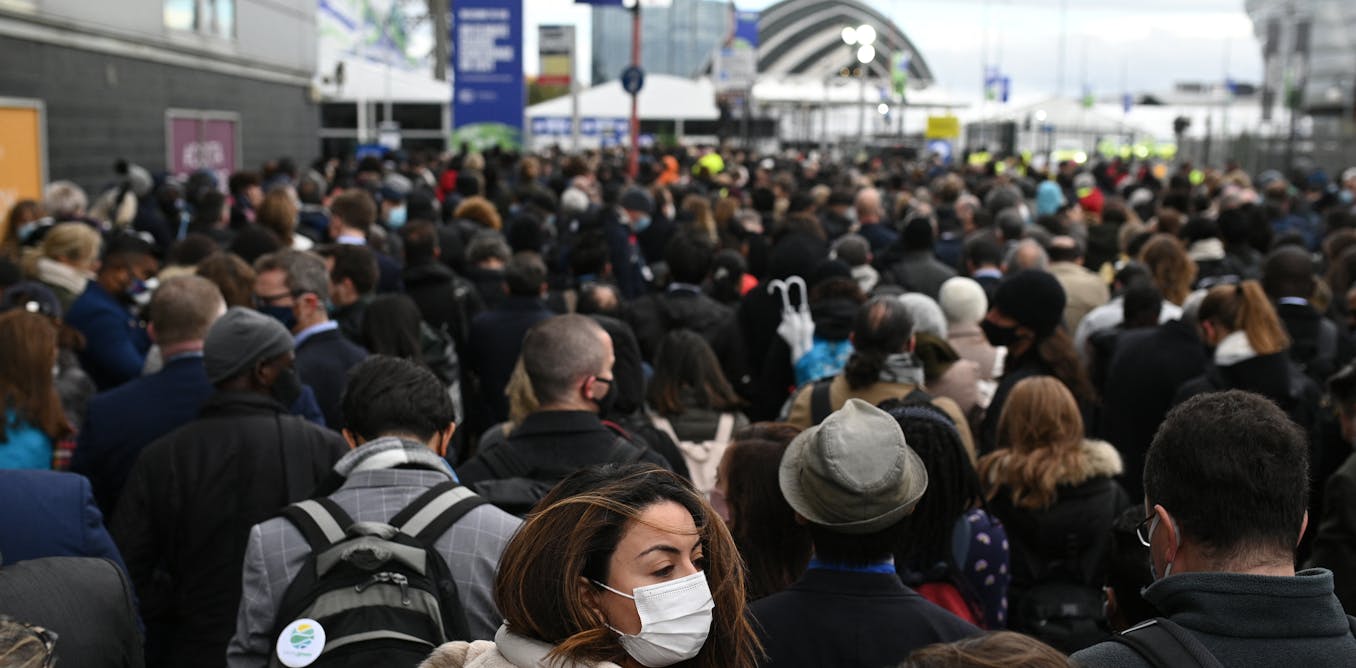How to Design for Dignity During Times of War | Slava Balbek | TED
In the midst of war and destruction, Slava Balbek, an architect and entrepreneur from Ukraine, found a way to bring dignity and healing to his fellow citizens through innovative design solutions. As a member of the Aerial Reconnaissance Unit, Balbek went from running a successful architectural studio to piloting UAVs to aid Ukrainian artillery against a Russian invasion.
Balbek’s journey through the war-torn landscape led him to realize the importance of creating a sense of home and dignity for displaced people. This realization inspired Balbek to start the RE:Ukraine Housing project, which aimed to provide temporary housing that prioritized the comfort and well-being of its residents.
Through the project, Balbek and his team developed a system of dignified, temporary accommodation that catered to the diverse needs of displaced individuals and families. The project not only provided physical shelter but also aimed to help people recover from trauma and rebuild their lives.
Furthermore, Balbek and his team created the RE:Ukraine Villages tool, a free online resource that provides step-by-step instructions for rural housing restoration. This tool empowers homeowners and volunteers to rebuild and design homes that preserve the traditional image of Ukrainian villages.
Balbek’s story is a powerful example of how design can be used to bring hope and healing to communities in times of crisis. His innovative approach to architecture and humanitarian aid serves as a model for how creativity and empathy can make a difference in the face of adversity.
Watch the video by TED
Every month I spend a week on the front line. For over a year now, I have been a member of Aerial Reconnaissance Unit. Before the invasion, I had only used a drone to scout locations for my architectural practice. Now I pilot a UAV to help Ukrainian artillery spot targets.
This time two years ago, I would probably introduce myself as the CEO of an architectural studio. Maybe I would also brag about co-owning two cafes in Kyiv, which I also designed. To be clear, I still am an architect and an entrepreneur. It’s just that now I consider those roles supporting.
As a military volunteer, I have monthly shifts. This means I still get to spend time at home, my safe haven, trying to make sense of this new life. I travel back and forth from Kyiv to the front line and back to Kyiv. Not your regular commute, I suppose.
Even though Kyiv suffers constant missile attacks, the contrast in between the capital and the hotspots is quite stark. Back home, I can walk my dog Eva, grab a coffee and just barricade myself in my office. Of course, our work is often interrupted by the air-raid alarms,
But this is something we have grown to live with. Compared to dusty trenches near Kherson, our bureau’s open-space office seems like a perfect work environment. But somehow, whenever I try to focus, I keep thinking back to those trenches. It is there, just a few miles from the battlefield,
Where I can feel the most productive. And it is then, in times of distress, when I can clearly see what the future holds. Of course, it hasn’t always been this way. Before Russia launched its full-scale war, I had a pretty regular life. Well, maybe not that regular. My architectural studio was busy pushing the envelope. We renovated an old church in San Francisco, California, turned a former military arsenal into a teeming food hall. And even designed the art installation for the Ukrainian polar research base. Seriously, here’s the proof. All the way from Antarctica.
All I’m saying, we were doing just fine. Great, even. But then came the sickest plot twist one could imagine. On February 24, 2022, I woke up to the sounds of explosions. Now, I don’t know if you know many people from Ukraine, but our humor can be rather dark.
But back then, we all went numb. Most of my teammates fled to safer areas, unsure whether they would have a home to return to. Some stayed in Kyiv, sheltering in basements and subway stations. The others decided to take up arms for the first time ever. After the shock came a revelation.
We had to turn our fear into action. So on day two, I stepped into a new role, switching from the coffee co-owner to emergency kitchen co-founder. And since there was plenty of food left in storage, we decided to cook meals for territorial defense units. Partnering up with other restaurants,
We founded an organization called Kyiv Volunteer. Many people came in to help — musicians and lawyers, drivers and architects — all united around a common goal. And to give you a sense of scale, on peak days, we served up to 15,000 hot meals to the military and medics. While our pots were clanking,
Russian troops were advancing. Ukraine’s future remained uncertain, but we were too busy to dwell on that thought. Working underground allowed us to prioritize the needs and address them, one by one. First we focused on basics: shelter, food, medicine. Then we had to address the recovery, both physical and mental.
Talking to people on our humanitarian mission, we got a simple yet fundamental notion. What we all craved most was the sense of home. Not four walls and roof per se, but the little things. The rose bush behind the kitchen window. The attic full of hidden treasures. That slightly crooked bench by the gate,
Always attracting the neighborhood cats. No matter where Ukrainians happen to spend the night, be it in an emergency shelter or some Good Samaritan’s home, they’re always trying to make it feel cozy. Sometimes we even better our temporary homes by, say, fixing a long-broken fence. This observation led us to another insight.
Home is the temple. And architecture can be heailing. When done with empathy, architecture can help people to sustain the trauma and envision the brighter future. Even if this future is still up in the air. Two weeks into invasion, my team and I remembered: we were still architects
And could use our expertise for a good cause. This was when our bureau started working on an idea we call RE:Ukraine Housing. Knowing that nothing is more permanent than temporary, we tasked ourselves with raising the standard of temporary housing. Being both architects and displaced people, we knew how to make a difference.
So what is the first thing that comes to your mind when you think of temporary housing? Probably those typical refugee camps, built from shipping containers. So this is something our team sought to change. Dignity no matter what. These four words became a basis for our work and in a way, our mission.
In merely two weeks, we developed a system of dignified, temporary accommodation. Our vision of what displaced people need to feel at ease. We want residents to feel equally comfortable, so we made our rooms fit different life scenarios, whether it’s an elderly couple or a single parent with a newborn.
We also knew people would need a place to work, study and care for their kids, so we provided them the space to do this as well. And to avoid spatial segregation, we proposed to make public spaces, open to anyone, building bridges in between host communities and IDPs. Technology-wise, we didn’t reinvent the wheel.
But this is what and how we suggest building that made people reconsider the very essence of temporary housing. This May, after a year of preparation and paperwork, we broke ground on our pilot settlement. Bucha District, once known as the site of Russian atrocities, became a home for our big idea
And a symbolic place to create new, happier memories. Now, RE:Ukraine is not just a housing project but a pilot for a recovery program. Our goal is to help displaced people get back on their feet and reintegrate, leaving their trauma behind.
And since many places in the world are devastated by wars and climate change, the displacement challenge is the global one. Though rooted in Ukraine, the model can be replicated, helping to accommodate the displaced people elsewhere. Watching Ukrainians flock to Bucha and other liberated areas, translated into another insight.
Our folks don’t want to wait to fix what’s broken. Fixing is the first thing we do after every attack, despite the threat of anything being destroyed again. Public spaces like schools and hospitals restored by local authorities. But when it comes to private housing, people are often left with this task [on] their own.
So to help smaller householders rebuild, we created RE:Ukraine Villages, a free online tool for rural housing restoration. With just a few clicks, the tool generates you a step-by-step manual to restore a house or to design a new one from scratch. Floor plans, façade scans, technical description, a list of materials.
Fool-proof guides for homeowners and volunteers. To show you how it works, here’s the project generated with the tool. And the model of a house one may build based on this manual. To preserve the traditional image of Ukrainian village, we decided to base our builder on a local design code.
And since every region has its own quirks, the tool had to reflect them. So the Kyiv region became the starting point for our research. Our architects traveled from village to village exploring different types of roofing, windows and cornices. Then came the developers who transformed the data in an accessible tool.
Just imagine, that tool can generate you over 211 million unique house configurations for the Kyiv region alone. And each house, though designed with modern materials, looks super familiar, like the one Ukrainians spent their summer holidays at. A reminder of happier days and a wholesome image of home.
The peak of our work fell on the end 2022. This was when Russia targetted the power plants, to plunge our cities in total darkness. Our team had to work around the power cut schedule, trying to get the work done during the four-hour spans.
This was when we discovered how to charge our computers from the car inverter. Now, I hope none of you ever happen to face a blackout. But if you do, remember this life hack. And to give you some context, the minibus we used as the power bank is the same I use on my military missions. So this is what Ukrainians call war-work-life balance. The thing we mastered over the last year and a half.
Now, I would be lying if I said I’m not proud of our accomplishments, I truly am. But just imagine how much more we could achieve if not for the war. Despair and uncertainty can fuel your ideas. But do we really need to wait for this kind of fuel?
The best time is always now. So if you have the privilege of living in peace, use this time wisely. And don’t worry too much about the future. It’s not that scary if you embrace it with dignity. Thank you.
About TED
The TED Talks channel features the best talks and performances from the TED Conference, where the world’s leading thinkers and doers give the talk of their lives in 18 minutes (or less). Look for talks on Technology, Entertainment and Design — plus science, business, global issues, the arts and more. You’re welcome to link to or embed these videos, forward them to others and share these ideas with people you know.
Video “How to Design for Dignity During Times of War | Slava Balbek | TED” was uploaded on 02/23/2024 to Youtube Channel TED

































